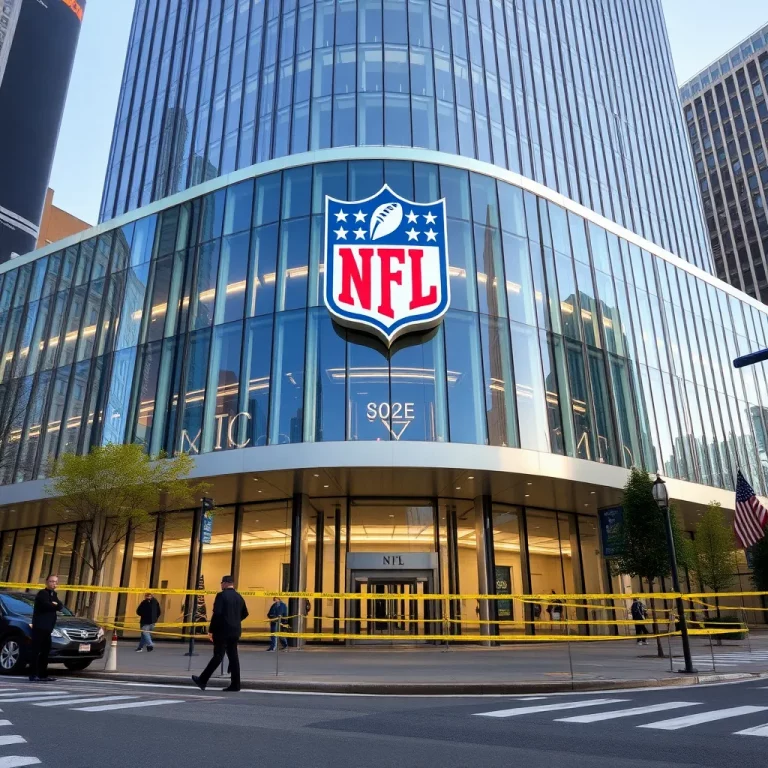New York City is reeling after a tragic shooting incident that occurred on July 28th at the NFL’s New York headquarters, located on Park Avenue. Following this devastating event, which left four people dead and another seriously injured, the NFL has taken steps to enhance security across its 32 teams. A memo was sent out by the league’s chief security officer and general counsel, outlining important recommendations for teams to follow.
The memo emphasized that safety is of utmost concern, noting, “The Committee recognizes that these changes will affect day-to-day operations and require an investment of time, coordination, and resources.” It stressed that ensuring the safety and sense of security for players, coaches, staff, and everyone working in and around NFL facilities should be a top priority.
Authorities have confirmed that the shooting left several victims, including off-duty NYPD Officer Didarul Islam and three others: 43-year-old Wesley LePatner, 27-year-old Julia Hyman, and security guard Aland Etienne. The gunman, identified as Shane Tamura, entered the building and opened fire in the lobby, causing chaos and panic.
Reports indicate that *Tamura, licensed to carry a concealed weapon in Nevada*, exhibited alarming behavior before the shooting, and investigations suggest he may have had issues related to his mental health. After shooting individuals in the lobby, Tamura moved to a 33rd-floor office before taking his own life.
This disturbing incident has caused the NFL and associated teams to reconsider security measures, demonstrating that safety is not just an afterthought, but a fundamental aspect of their operations. Team owners and presidents are expected to implement these recommendations and prioritize security to prevent such incidents in the future.
As the investigation continues, the community and the sports world grapple with the implications of this tragedy. The NFL aims to take proactive steps to ensure the safety of everyone involved, reinforcing the notion that security is foundational to the functioning of their operations.


